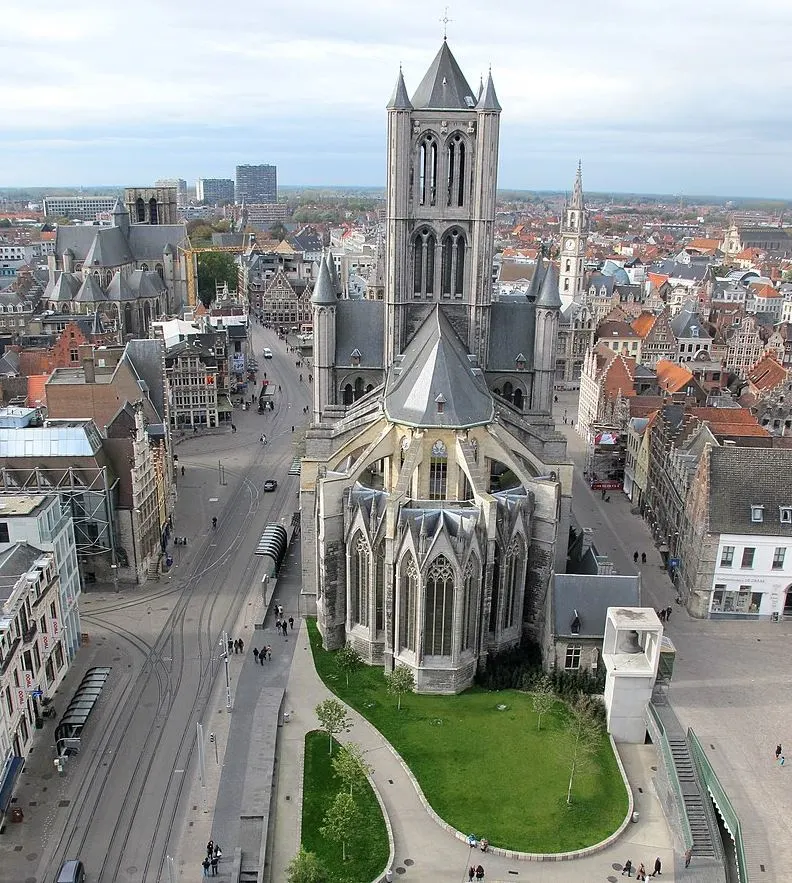The center of Ghent is the epitome of a picturesque medieval town that emphasizes the city’s rich history.
This city in the East Flanders province is the 4th-most populous metropolitan area in Belgium today, but was one of the largest cities in Europe in the early 14th century.
Ghent’s architecture reflects this as there are 3 amazing medieval structures within walking distance of each other. One of them is an amazing bell tower that majestically overlooks the city.
Let’s take a closer look at some of the most interesting facts about the Belfry of Ghent, one of the most amazing buildings in Belgium.
1. It’s located in between the city’s two major medieval churches
The heart of Ghent is quite fascinating because it’s dominated by three medieval buildings. Saint Nicholas Church stands just west of the Belfry of Ghent and was completed in the 13th century.
Just east of the Belfry, you can find Saint Bavo’s Cathedral, a Gothic cathedral that houses the world-famous Ghent Altarpiece by the van Eyck brothers.
The building that borders the Belfry is the city’s cloth hall, a structure that was constructed between 1425 and 1445. It originally had 7 bays in the 15th century but 4 were added in 1903 in accordance with the original plan.
This architectural wealth reflects the importance of Ghent during the Middle Ages as it was the richest city in northern Europe at the time.
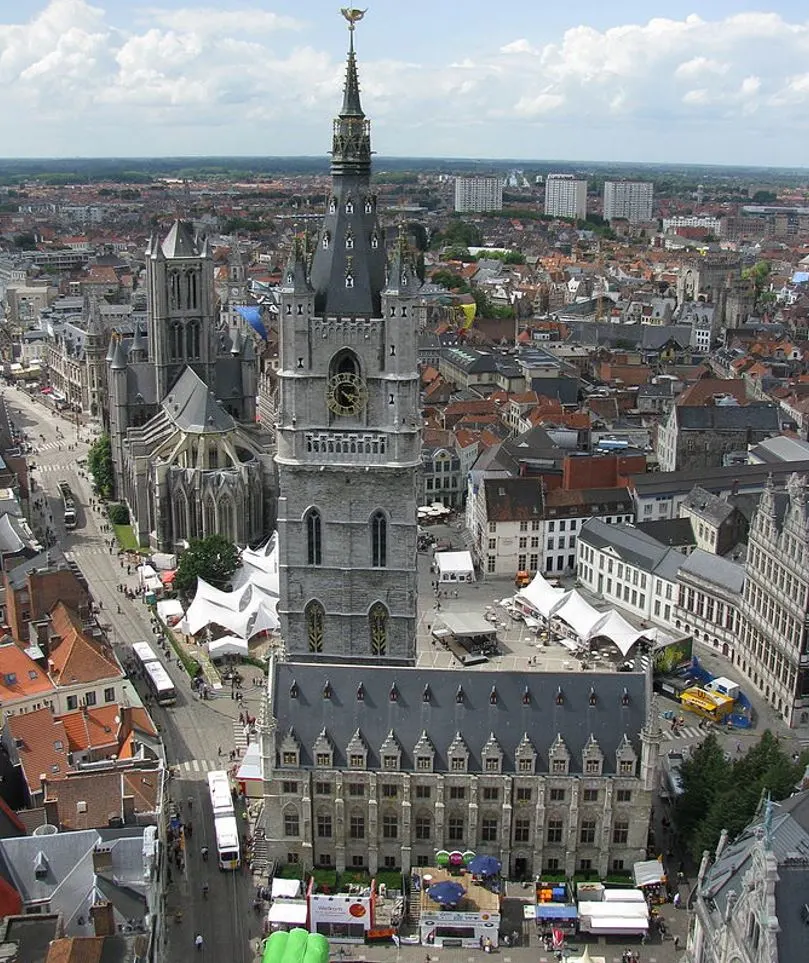
2. The bell tower was completed in the 14th century
Ghent was founded in the 7th century on the confluence of the Leie and Scheldt Rivers. Saint Bavo’s Abbey and Saint Peter’s Abbey were established around 650 by Saint Amand.

The favorable location of this settlement allowed the city to grow into one of the most important port cities in Europe as the center of the wool industry.
The first stone of the Belfry of Ghent was laid in 1313, a time when the Counts of Flanders still occupied the Granvesteen Castle (they moved to the nearby Prinsenhof in 1353).
This was a turbulent time in the region and this monumental tower wasn’t completed until 1380.

3. The Belfry of Ghent is the tallest of its kind in Belgium
A belfry was constructed in just about every major city in this part of Europe during the Middle Ages. These were mostly used as watch towers and to mark the time.
None of the Belfries in Belgium and northern France are taller than this huge tower in Ghent.
The building reaches a height of 91 meters (299 feet) which is slightly taller than the equally imposing Belfry of Bruges which stands 83 meters (272 feet) tall.
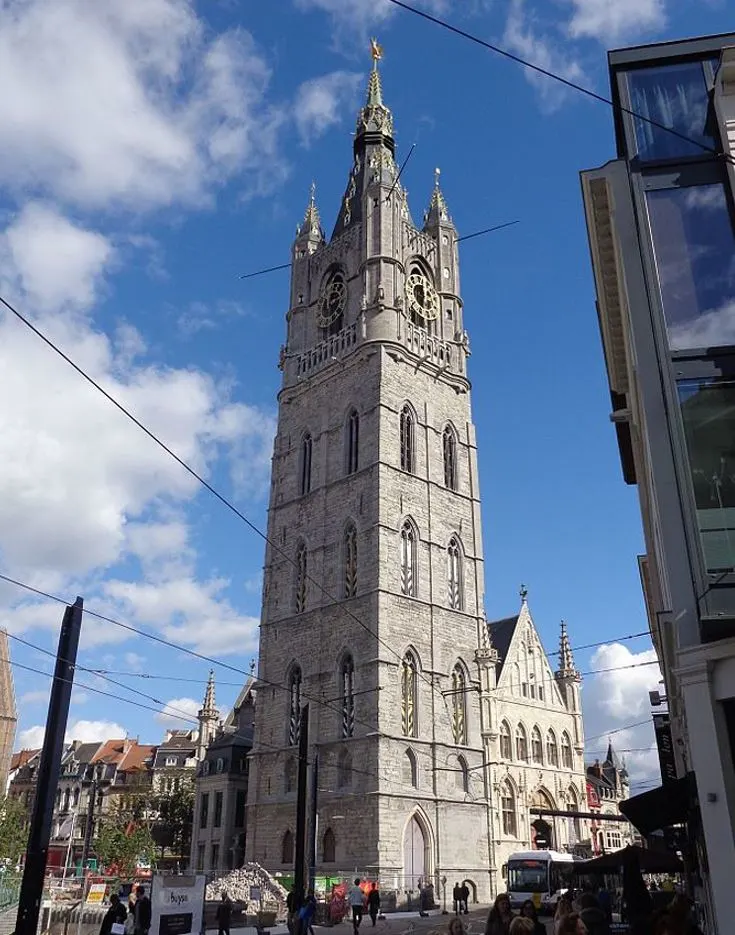
4. The upper part was constructed to the original design in the 20th century
Upon closer inspection, you’ll notice that the upper part of the Belfry and the lower part don’t exactly look the same.
That’s because the upper section was only added at a later time because the number of bells inside the tower gradually increased.
A local architect named Lievin Cruyl (1634-1720) designed a Baroque structure in 1684 but it wasn’t added. the campanile was finally added in 1771 and the Gothic Revival spire was placed on top of the tower in 1851.
This cast-iron spire was destroyed shortly before the start of World War I between 1911 and 1913 and replaced by the stone spire you can see today.
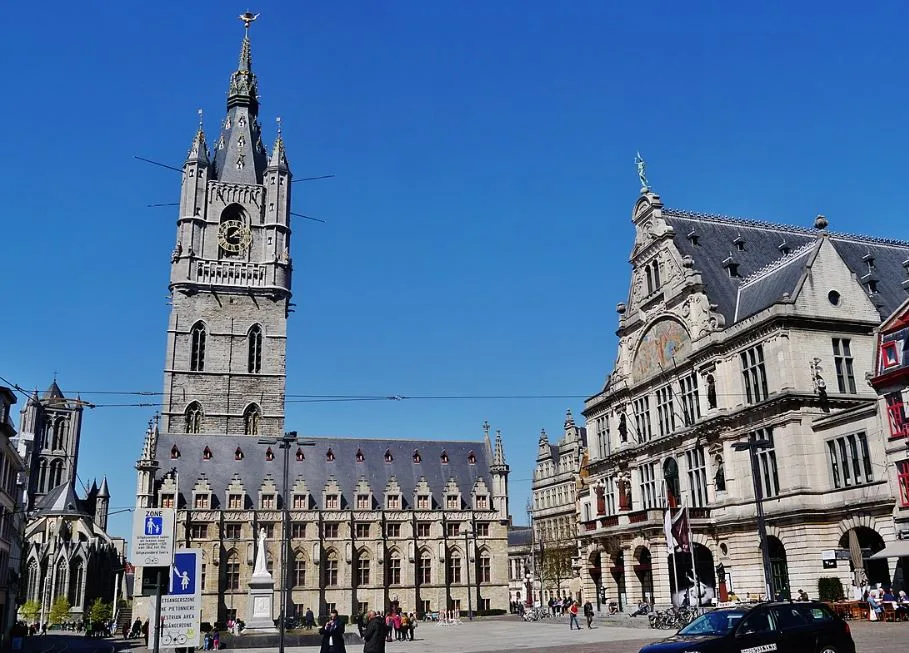
5. The Belfry is topped by a golden dragon that watches over the city
There’s a reason why the Belfry of Ghent was built slightly taller than the Belfry of Bruges.
It was a symbolic gesture to emphasize that Ghent had taken over the role of Bruges as the center of the wool industry in this part of Europe.
The Belfry was topped with a gilded dragon in 1377, shortly before the tower was marked as complete, and has guarded the city ever since.
To put some salt in the wound of the former superpower, this dragon was manufactured in Bruges and brought to Ghent in the 14th century.
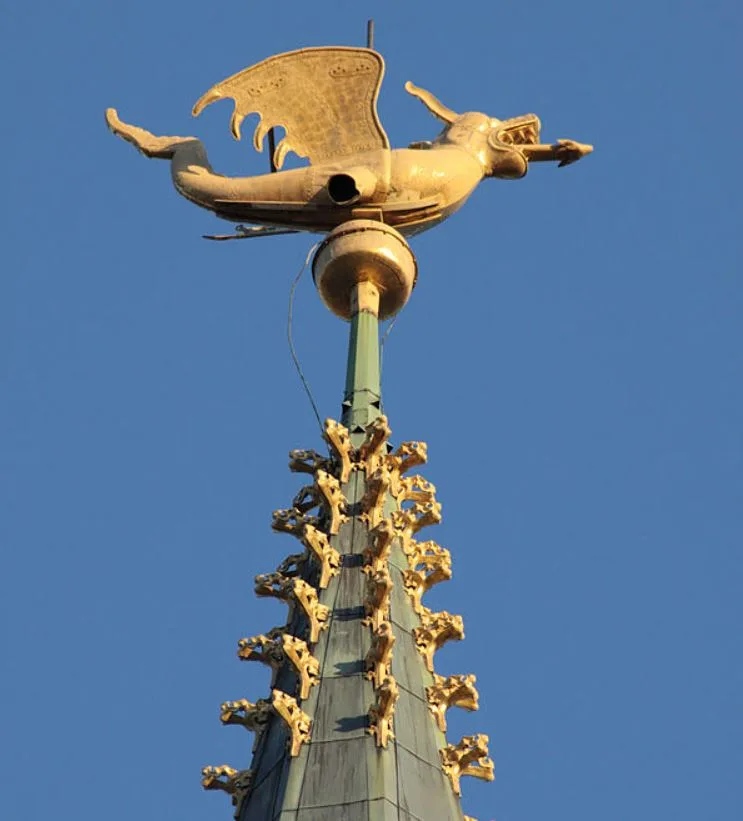
6. The Mammelokker is a sculpture that depicts a popular Roman legend
Just like Bruges, Ghent gradually lost its position as the most important city in the region as the power shifted to Antwerp and Bruges at the end of the Middle Ages.
This meant that the cloth hall right next to the Belfry became useless as the center of the cloth industry so it was repurposed.
Apart from serving as the meeting place of a militia guild and a fencing school, it was also used as the local prison between 1742 and 1903
The sculpture on the prison’s entrance is called the “Mammelokker,” a reference to an ancient Roman legend of Cimon who was sentenced to death in prison by starvation.
The old man’s daughter Pero was allowed to visit him and secretly breastfed him during these visits. When this was discovered, the Roman authorities set Cimon free.
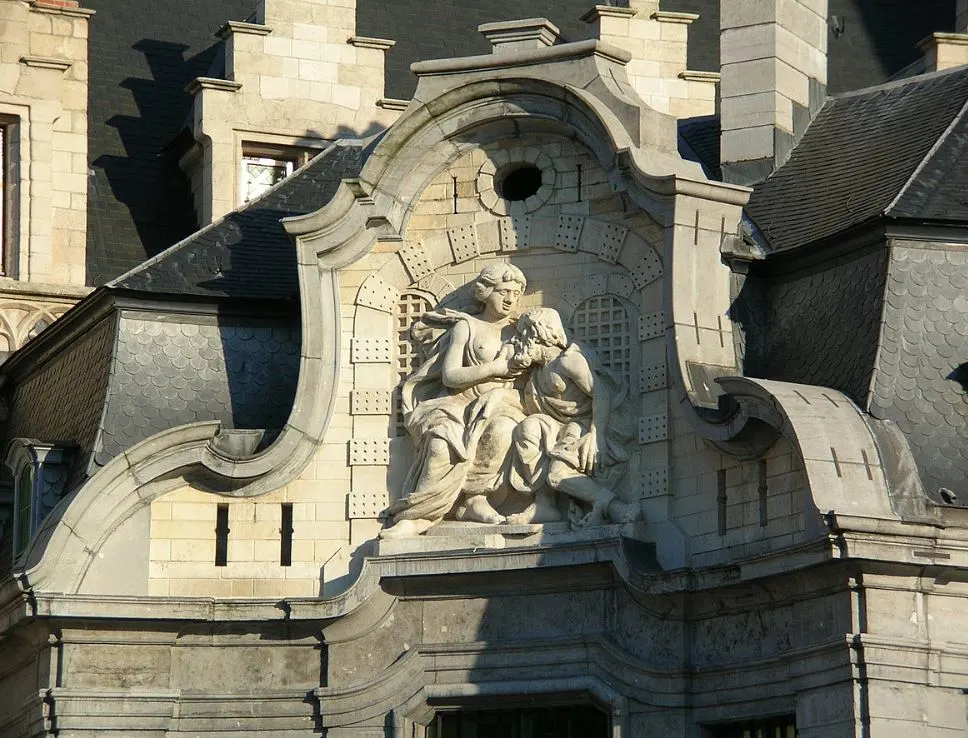
7. It’s one of the Belfries of Belgium and France’s UNESCO World Heritage site
The collection of Belfries of Flanders and Wallonia became a UNESCO World Heritage site in 1999. The Belfry of Ghent was one of the 32 belfries on this initial list.
The list was expanded with 23 additional belfries in northern France and the Belfry of Gembloux in Wallonia to become the “Belfries of Belgium and France.”
Constructed in a wide variety of architectural styles, these magnificent towers are some of the greatest monuments in northern Europe.

8. You can climb the Belfry and get amazing views of Ghent
Do want to learn more about the Ghent Belfry? Or do you want to climb to the top of it?
Both are possible because this landmark in Ghent provides guided tours and also allows you to climb the stairs to the top.
This allows you to get a complete overview of the magnificent medieval center of the beautiful city of Ghent.
